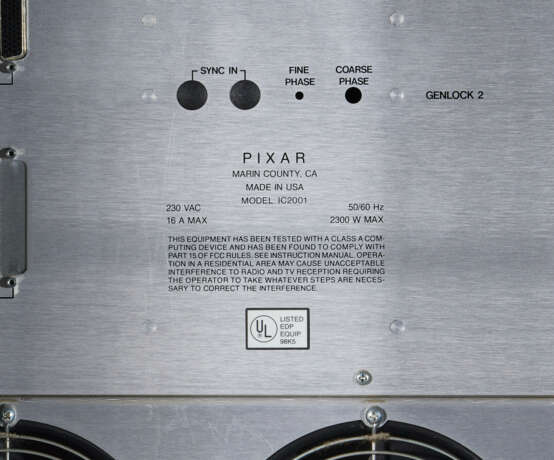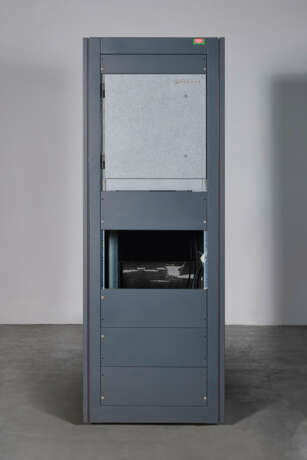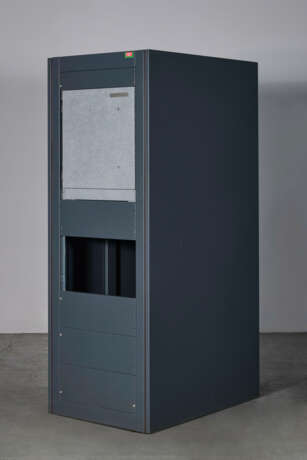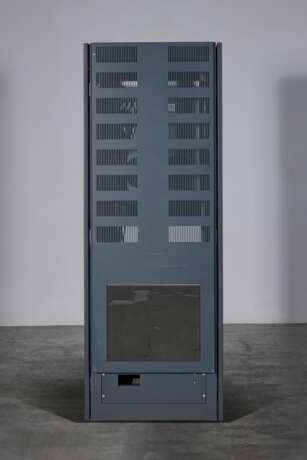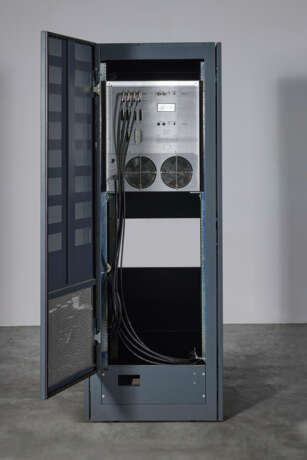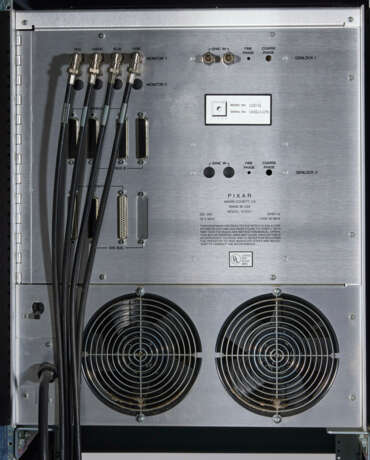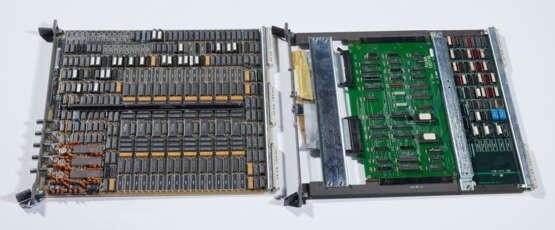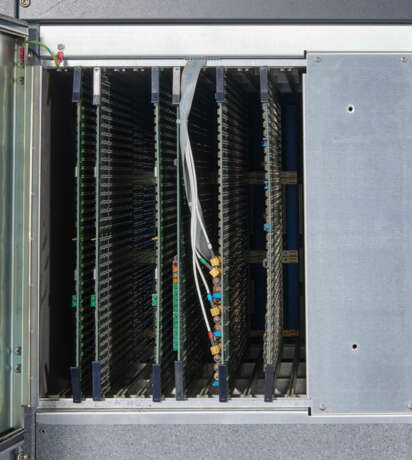ID 1279126
Lot 35 | A PIXAR IMAGE COMPUTER
Estimate value
$ 10 000 – 15 000
PIXAR, 1986
Serial No. 8642A00176
Of monolithic construction, with two panels, one which opens to reveal sockets for circuit boards, together with 3 boards, one installed and two loose
The groundbreaking graphics workstation designed for rendering high-resolution images and animations.
Developed by the graphics division of Lucasfilm then Pixar, the Pixar Image Computer, introduced in 1986 was a high-performance graphics workstation designed for imaging professionals. The signification of the machine lies within its pioneering role in the development of high-resolution image processing and computer graphics. At a time when digital imaging technology was still in its nascent stages, this computer offered unprecedented capabilities for rendering complex images with remarkable detail and accuracy; specifically engineered to handle the demanding computational tasks required for medical imaging, meteorology, scientific visualization, and, most notably, animation.
Technologically, the Pixar Image Computer was a marvel. It was built around the capabilities of multiple powerful processors that worked in parallel, enabling it to perform rapid calculations and manage large data sets efficiently. The computer's architecture was optimized for handling graphical data, making it an ideal tool for industries that required high-fidelity image processing. The system included specialized hardware for rasterizing images and supported a range of advanced graphical functions, such as anti-aliasing and shading, which were critical for producing smooth, realistic images.
Indeed, applicable for such essential fields such as medical imaging, where the processors capability to render detailed images quickly made is an invaluable asset for visualising complex anatomical structures, the Pixar computer marked a revolution in image software that affected beyond its famous employment in the field of entertainment. However, it was in the realm of animation that the Pixar Image Computer made its most enduring mark. The computer played a crucial role in developing some of the earliest computer-generated imagery (CGI) used in film and television, including the short film "Luxo Jr.," which was nominated for an Academy Award. This short film demonstrated the potential of computer-generated animation to produce lifelike movements and expressions, setting the stage for the future of animated films.
Despite its advanced capabilities, the Pixar Image Computer faced significant challenges in the market. Its high cost and the specialized nature of its applications limited its adoption to niche markets. However, whilst it was not widely adopted, its influence is evident in the subsequent development of CGI technology and its profound impact on the entertainment industry. Indeed, the Pixar Image Computer’s legacy is a testament to the early vision and technological ingenuity that would eventually lead to the transformation of animation and digital imaging.
69 ½ in. (176.5 cm.) high, 25 ½ (64.8 cm.) wide, 36 in. (91.4 cm.) deep
Provenance
LCM Collection.
Further details
This lot is subject to additional disclaimers. Please carefully review Section E(2), subsection (m) “Vintage Computers and Machines”.
| Auction house category: | All other types of objects, Instruments |
|---|
| Auction house category: | All other types of objects, Instruments |
|---|
| Address of auction |
CHRISTIE'S 8 King Street, St. James's SW1Y 6QT London United Kingdom | |
|---|---|---|
| Preview |
| |
| Phone | +44 (0)20 7839 9060 | |
| Buyer Premium | see on Website | |
| Conditions of purchase | Conditions of purchase |
